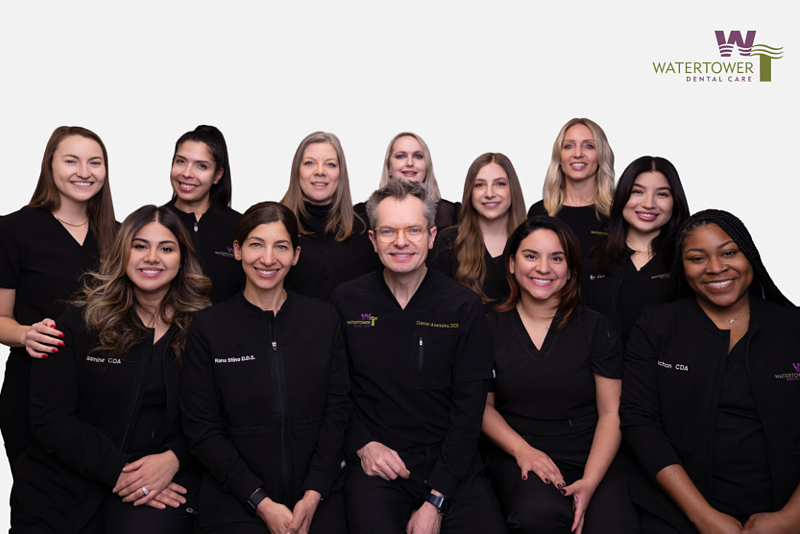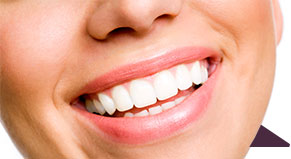What Causes Gums to Turn Purple or Brown?
July 21st, 2016
 Seeing your gums change from their natural color can be pretty scary. One day you may see healthy pink gums in the mirror, and the next you might notice an ominous purple or brown tint creeping over them. Brown gums or gum darkening could be completely natural based on your ethnicity or aging. But if your gums are suddenly turning purple or brown, it may be a sign that something dangerous is happening inside your mouth that requires professional attention.
Seeing your gums change from their natural color can be pretty scary. One day you may see healthy pink gums in the mirror, and the next you might notice an ominous purple or brown tint creeping over them. Brown gums or gum darkening could be completely natural based on your ethnicity or aging. But if your gums are suddenly turning purple or brown, it may be a sign that something dangerous is happening inside your mouth that requires professional attention.
Here are the main causes of gums turning purple or brown.
Naturally Darker Gums
If you have naturally brown or darker gums based on your your skin pigment, then you have no need to worry. Gum color varies just like skin color does. If you aren’t caucasian, you may have dark brown gums or may experience spotted darkness on your gums. This can be due to an increase of melanin production in your body and is completely normal and natural.
As you age, you may also notice that your gums change color. If this change in color is uniform and you don’t experience any other issues, including swollen gums, bleeding, and pain, this change in color may be completely natural. That being said, we always recommend that you check in with a dentist before passing a change in gum color off as normal.
Medication & Smoking
Both medication and smoking can result in gum discoloration. One of the most common causes of oral pigmentation change is a condition called Smoker’s Melanosis. If you have Smoker’s Melanosis, your gums, cheeks, or palate may turn brown or black due to smoking or using drugs that contain nicotine. Smoking can also lead to gum disease and oral cancer, which can result in your gums turning purple or brown (we’ll discuss this more below). Finally, some medication can also cause your gums to change color.
What Causes Brown Gums?
If your gums aren’t naturally brown, you may have a more serious problem. Brown gums could be a sign of calculus. Calculus is a buildup of hardened dental plaque, saliva, minerals and/or oral debris that have turned into a calcified deposit. These deposits can build up underneath your gum line or on your gum line and appear as yellow to dark brown spots. Daily flossing and brushing are imperative to avoid calculus. If you think you have calculus, you should see your dentist immediately.
A tan, brown, or blue-black spot on your gums may signal that you have oral malignant melanoma, a dangerous type of cancer. The spot may also be mixed with red, purple, or grey colors. It could be found anywhere in your mouth and its shape and size will change as it grows. While oral melanoma is very rare, it can be fatal. You should visit a medical professional immediately if you think you may have oral melanoma. Learn more about oral malignant melanoma here.
What Causes Purple Gums?
[caption id="attachment_2527" align="alignright" width="300"] Before and After Gum Disease Treatment Therapy[/caption]
Before and After Gum Disease Treatment Therapy[/caption]
Purple gums can signal that you have gum disease (periodontal disease). As gum disease worsens, you may notice that your gums are swollen and appear to be bright red or purple. Plaque is the root cause of gum disease, at first irritating your gums and eventually causing deep infections that can destroy your tissue and bone. It’s important that you practice proper oral hygiene to avoid gum disease and see a dentist as soon as possible if you think you are suffering with the disease. Click here to see how we treat severe gum disease at Water Tower Dental Care in Chicago.
A purple spot on your gums could also be a sign of oral malignant melanoma, which we discussed above. You should see a medical professional as soon as possible if you have a purple spot anywhere in your mouth.
How to Avoid Gum Discoloration
Unnatural gum discoloration is typically a sign that something’s going wrong in your mouth. The best way to avoid issues like gum disease is to brush your teeth twice a day for at least two minutes each time, floss every day, avoid sugary and acidic foods, and visit your dentist regularly. You should also avoid smoking, which can contribute to gum disease and cancer. Finally, if you notice that your gums change color after taking a new medication, ask your doctor for possible alternatives.
If you notice that your gums have turned purple or brown, we highly suggest that you visit a doctor as soon as possible. While it could be a natural occurrence, it may also be a serious warning sign. Better safe than sorry! If you’re in Chicago, contact us to make an appointment at Chicago’s number one dentistry. We’ll help you figure out what’s going on with your gums and put you on a path to making them look normal and healthy again.

 Open bites can be a real hassle. Not only can they make your smile look strange, but they can also lead to serious dental problems. Braces, bite blocks and headgear used to be your only option for treating dental open bites. But nowadays, we have a much more discreet and much less invasive way to fix open bites:
Open bites can be a real hassle. Not only can they make your smile look strange, but they can also lead to serious dental problems. Braces, bite blocks and headgear used to be your only option for treating dental open bites. But nowadays, we have a much more discreet and much less invasive way to fix open bites:  The wonderful thing about being early for a Water Tower Dental Care appointment is our location! Since we’re located in what many consider Chicago’s best shopping mall, you don’t have to succumb to boredom while waiting in a dental office for your name to be called. Instead, we encourage you to go out and explore Water Tower Place and Chicago’s Magnificent Mile!
The wonderful thing about being early for a Water Tower Dental Care appointment is our location! Since we’re located in what many consider Chicago’s best shopping mall, you don’t have to succumb to boredom while waiting in a dental office for your name to be called. Instead, we encourage you to go out and explore Water Tower Place and Chicago’s Magnificent Mile! You might consider brushing and flossing your teeth everyday a pain. But it’s definitely not as painful as it used to be. Throughout history, humans have experimented with a variety of different tools and ingredients to clean their teeth, including bones and oyster shells. The toothbrushes, toothpastes and floss we use today were created relatively recently.
You might consider brushing and flossing your teeth everyday a pain. But it’s definitely not as painful as it used to be. Throughout history, humans have experimented with a variety of different tools and ingredients to clean their teeth, including bones and oyster shells. The toothbrushes, toothpastes and floss we use today were created relatively recently.




 Website Powered by Sesame 24-7™
Website Powered by Sesame 24-7™